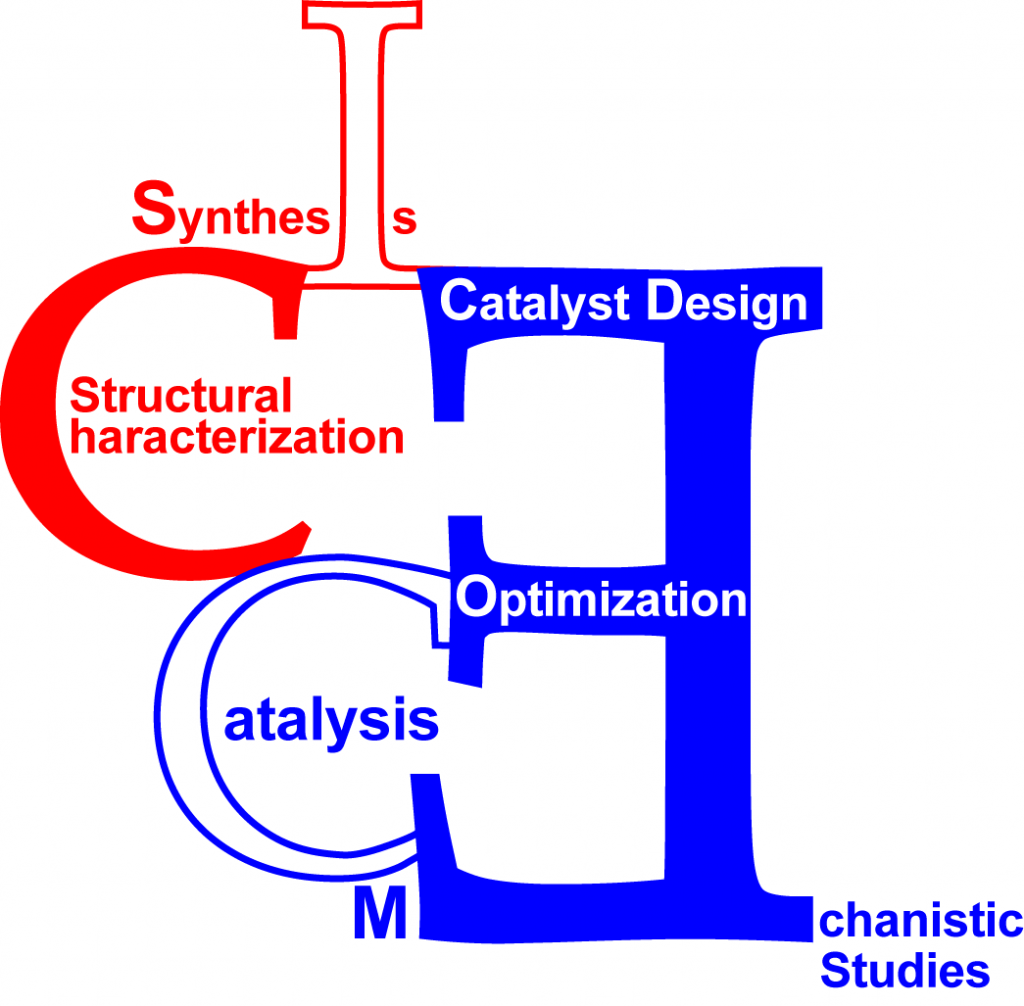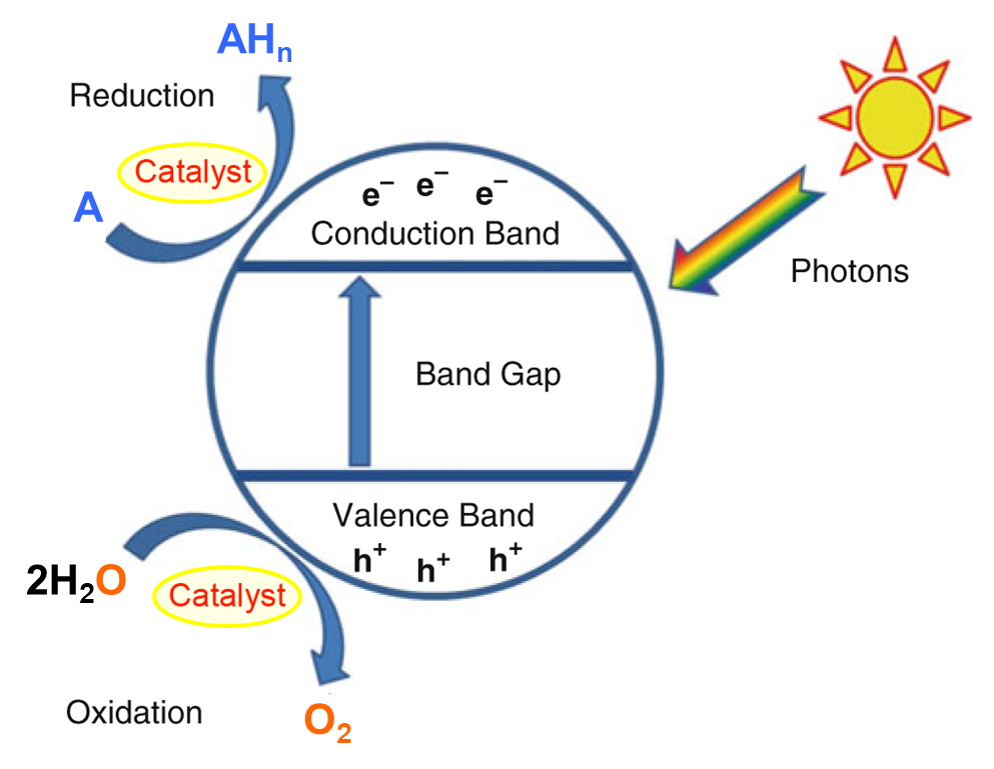

IC2E is a laboratory devoted to the synthesis, characterization and application in catalytic processes of novel inorganic and organometallic molecules and materials.
The main focus of IC2E is on the utilization of homogeneous, heterogeneous, supported and hybrid catalytic systems in processes relevant for the production of fuels from renewable sources (renewable fuels, RFs).

The generation of RFs using electrons and protons coming from cheap and abundant oxidizable substrates (ideally H2O) is, by definition, an endergonic process and catalysis has a key role in this respect since it allows the energetic costs of the processes, which must be provided by renewable sources (sun and wind), to be minimized possibly down to those imposed by thermodynamics. In particular, IC2E is developing efficient catalysts for water oxidation and H2 storage/release in/from higher added-value energy vectors (HCOOH, alcohols, NAD+, etc.), and, all key processes for RFs generation.

IC2E has a long-standing expertise in the development and exploitation of advanced multi-nuclear and multi-dimensional NMR methodologies for structural characterization of inorganics and organometallics. In particular, a battery of NMR tools, including diffusion NMR methods, is utilized to determine the molecular and supramolecular structure of the catalysts, to investigate the reaction mechanism and to monitor catalyst transformation under conditions as more as possible similar to those employed in catalysis. All structural, mechanistic results are then combined with the catalytic ones to disclose structure/activity relationships aimed at a better undestanding of the entire process and at designing new catalysts with improved performances.

IC2E has also expertise in the synthesis of functional materials such as a) proton conductive ionomeric membranes for fuel cells application and their electrochemical and mechanical characterization, b) 2D Layered Double Hydroxides (LDH) and Metal Phosphonates (MP), which find applications as supports for catalytic metal nanoparticles, intercalation and separation of pollutants or as fillers for polymeric composites, and c) 3D porous materials, based on cerium and zirconium with a Metal-Organic Frameworks architecture (MOF), which can be exploited as semiconductive materials for photovoltaic or photocatalytic applications or as materials with enhanced selectivity towards CO2 absorption at medium-high temperatures.
IC2E established many scientific collaborations with scientists of well recognized international reputation as well as with international private companies and institutions, such as the Dow Chemical Company, Univation Technologies, SABIC and the Dutch Polymer Institute.

IC2E uses the most modern synthetic techniques, including glove boxes and high vacuum lines for the synthesis and manipulation of highly reactive molecules and materials. IC2E is equipped with several analytical instruments.
– NMR spectrometer: Bruker AVANCE III HD 400, equipped with solution, solid state MAS and HR MAS probes.
– UV-VIS Spectrophotometers: Perkin Elmer 1725X and Hewlett Packard CARY 8453 equipped with a diode array.
– ICP-OES: Varian Liberty Series Spectrophotometer
– X-ray powder diffractometer: PANalytical X’PERT PRO equipped with X’Celerator fast detector and sample holder for temperature up to 200°C.
– Frequency response analyzers for Impedance Spectroscopy: Autolab PGSTAT 30 impedance analyzer for conductivity measurements at frequencies up to 1 MHz.
– DSC and TGA: Netzsch STA 449C thermoanalyzer for simultaneous TG-DSC or TG-DTA analysis up to 1300°C.
– Surface and porosity analyzer for solids: Micromeritics ASAP 2000.
– Polarimeter: JASCO DIP 360.
– GCs: Fison and Agilent.
– GC-MS: Agilent.
– HPLCs: Hewlett Packard and Agilent.

Thanks to the AMIS project IC2E is now equipped with a new generation high resolution single-crystal X-Ray diffractometer for structural determination of small molecules, and with a new EPR spectrometer for the characterization of radical species.
– X-Ray single crystal diffractometer: Bruker D8 Venture with a Mo high brilliance microsource, a Photon II monolitic detector and a Cryostream 800 liquid nitrogen cooling system.
– EPR: Bruker EMXnano, equipped with all available options, including the Nitrogen Variable Temperature Unit, the Liquid Nitrogen Finger Dewar, the UV Irradiation System, a Flat cell for aqueous solution, a Tissue Cell and a Flow through cell.
Staff
Alceo Macchioni (PI)
Mario Casciola
Ferdinando Costantino
Fabio Marmottini
Gabriel Menendez Rodriguez
Luca Rocchigiani
Cristiano Zuccaccia
Elisa Boccalon
Anna Dall’Anese
Roberto D’Amato
Chiara Domestici
Martina Landrini
Diletta Morelli Venturi
Leonardo Tensi
Caterina Trotta
Francesco Zaccaria